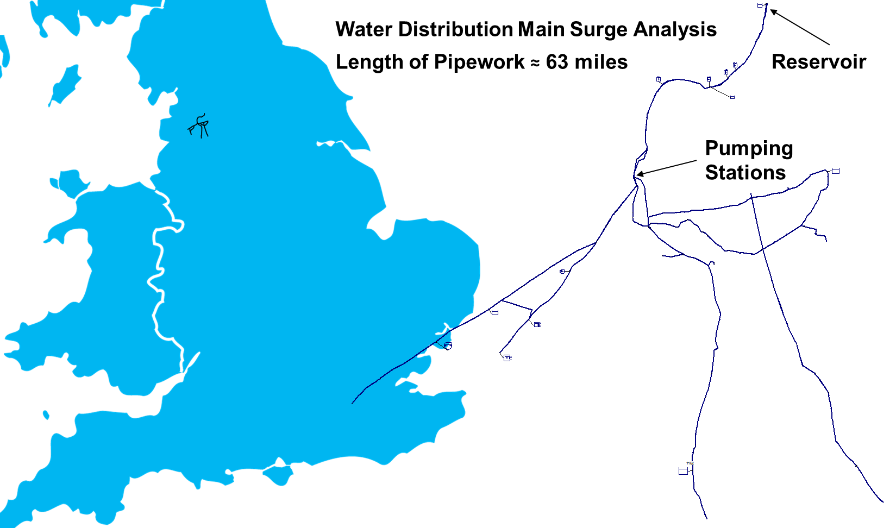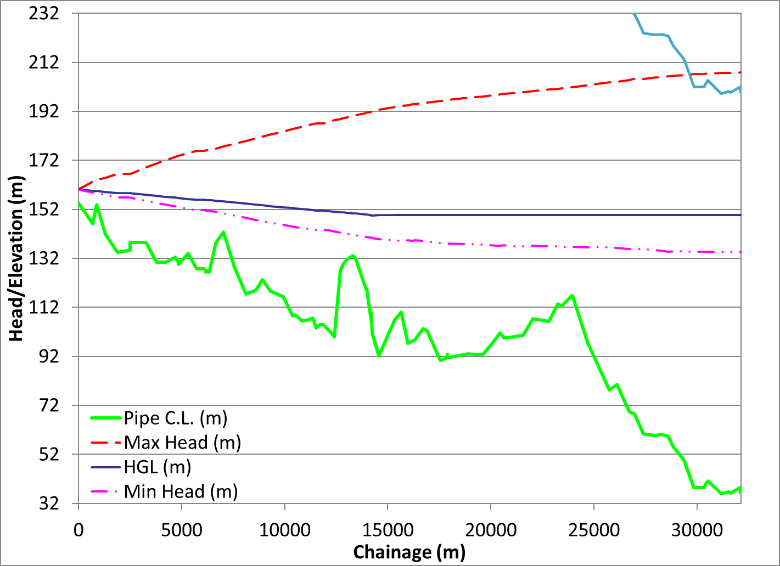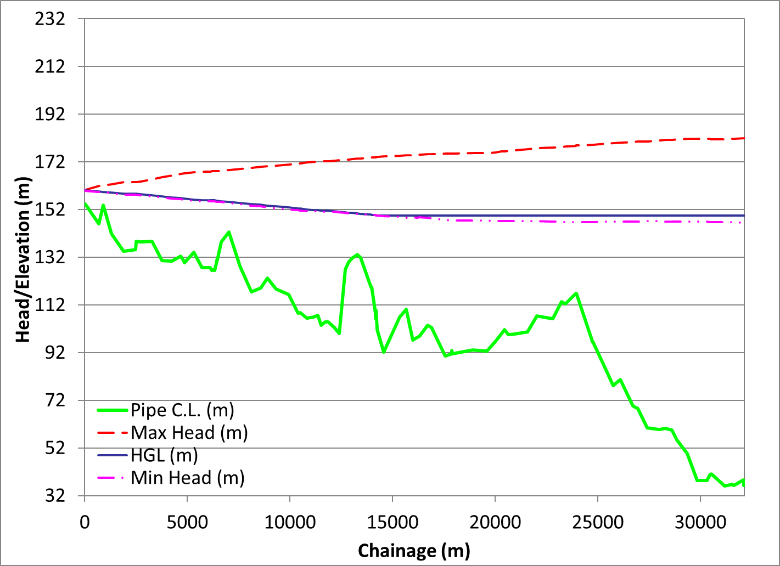Hodder Aqueduct Surge Analysis
Our client transfers water from the Haweswater Reservoir in the Lake District to a service reservoir near Manchester using the Haweswater Aqueduct (HA). This aqueduct consists of tunnels and pipes (syphons). Planned maintenance operations required the tunnel sections of the aqueduct to be isolated and drained. However, customers are supplied by off-takes from the HA syphon lines, and therefore, during the HA outage, alternative arrangements were required to ensure an uninterrupted water supply.
The Hodder Aqueduct is used to supply the HA syphon lines and their offtakes, and to ensure service reservoir water levels are maintained. It consists of two mains (36”/33” and 27”/25”) with various cross connections and offtakes. Two transfer pumping stations draw water from it and each supplies a different service reservoir (only one supplies the HA syphon lines).
Our Approach
MMI’s study involved the semi-automated conversion of a SynerGEE water distribution model into a (1000 component) Flowmaster network (Figure 1) so that a surge analysis could be conducted on the whole system.
This model enabled the suitability of the existing surge suppression equipment for the revised system to be assessed – including the influence of new pumps, improved pipes and valve arrangement. In particular, the study focused on establishing the system pressures for emergency pump stop operations. The aim was to ensure that the delivery pressure did not exceed the pipeline rating (potential pipe failures) or fall below atmospheric pressure (potential ground water ingress).
Figure 1: Hodder Aqueduct Location and Network Model
Results
Results in the form of envelopes for each main were presented for the complete system, identifying the maximum and minimum heads. Analysis showed that without the Pressure Relief Valve (PRV), pressures exceeding the pipeline rating were calculated towards the (closed) Pressure Sustaining Valves (PSV) when the transfer pumps tripped simultaneously (Figure 2). However, the existing surge vessels at both transfer pumping stations provided adequate protection to the mains when combined with an optimised PRV at one of the transfer pumping stations (Figure 3). Future operation of the system was also considered, with the old transfer pumps replaced by two new pumps. This was also found to be satisfactory.
Figure 2: Hodder Aqueduct Envelopes – with Transfer Pumping Station Pressure Reducing Valve
Figure 3: Hodder Aqueduct Envelopes – Without Transfer Pumping Station Pressure Reducing Valve
Added Value
MMI can assess the adequacy of proposed equipment and pipe modifications prior to any on-site changes. In this case, surge analysis was used to determine the inadequately suppressed system behaviour, and to optimise the required surge equipment to ensure safe operation.
For more information surrounding our Surge Analysis capabilities, please contact us on 0117 960 2212 (Bristol) or email us.


